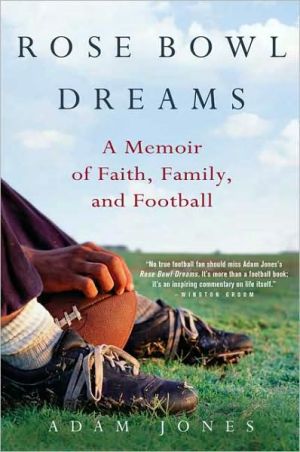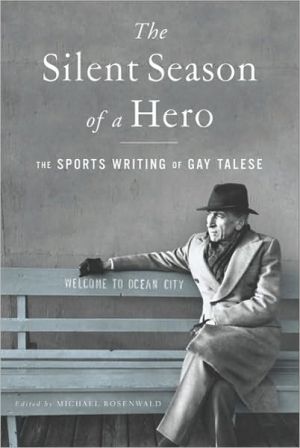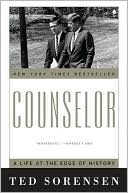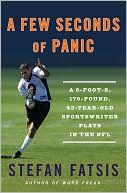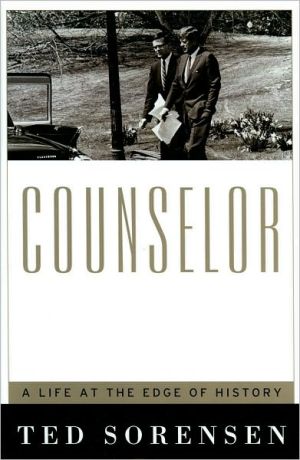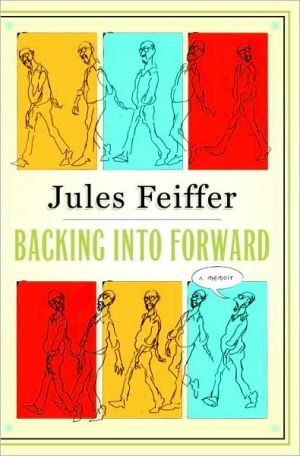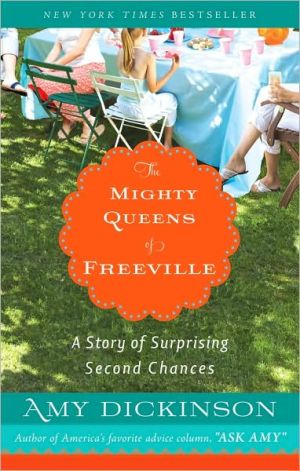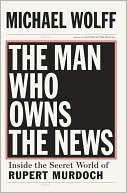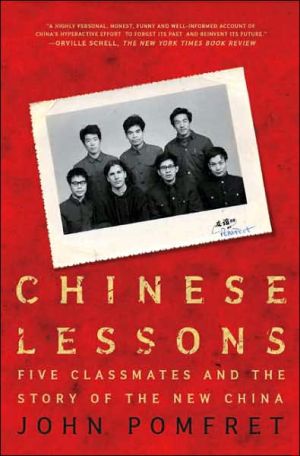Rose Bowl Dreams: A Memoir of Faith, Family, and Football
Praise for Rose Bowl Dreams:\ "No true football fan should miss Adam Jones' Rose Bowl Dreams. It's more than a football book; it's an inspiring commentary on life itself."\ —Winston Groom\ "Adam Jones had the good sense to be born into the middle of four generations of a football-lovin' Texas family, and now that I think about it, that's probably redundant. Rose Bowl Dreams reads as if Jones just pulled up a chair, popped open a cold one and started telling stories. He's good company, and you...
Search in google:
Praise for Rose Bowl Dreams:"No true football fan should miss Adam Jones' Rose Bowl Dreams. It's more than a football book; it's an inspiring commentary on life itself." —Winston Groom"Adam Jones had the good sense to be born into the middle of four generations of a football-lovin' Texas family, and now that I think about it, that's probably redundant. Rose Bowl Dreams reads as if Jones just pulled up a chair, popped open a cold one and started telling stories. He's good company, and you don't have to be able to name the starting lineup of the 2006 Longhorns to enjoy him. Rose Bowl Dreams may not be for Aggies, but the rest of us could learn something about faith, family and football." —Ivan Maisel, senior writer, ESPN.com, co-author of A War in Dixie“The best football book since Frederick Exley’s classic A Fan’s Notes. Adam Jones’ Rose Bowl Dreams delves deeply into everything that made this country great—mother, God, football and drinking. Even if you can’t stand any of those things, Rose Bowl Dreams will almost certainly change your mind.” —Kinky Friedman, author of What Would Kinky Do?: How to Unscrew a Screwed-Up World"Much like Adam Jones, my parents took me to my first football game at age six. As a result, I never stopped playing the game or writing about it. This is a remarkable story about football and family. It provides a wonderful message about how sports, if handled in the proper context, will forever keep humans together. Rose Bowl Dreams made my spine tingle.'' —Jim Dent, New York Times bestselling author of The Junction Boys and Twelve Mighty Orphans"Rose Bowl Dreams reveals what lies at the heart of the hardcore college football fan better than any other book I've read. This story of faith and faith rewarded will move all readers, even those who scarcely know the difference between a punt and a pass." —W. K. Stratton, author of Backyard Brawl: Inside the Blood Feud Between Texas and Texas A&MGod created college football as a grand gift to an imperfect world. I learned this as a very small boy living in the middle of the Texas Panhandle. In time I would come to believe that college football contained all of the joy, faith, pageantry, feeling, failure, and renewal that any person could hope for out of life. It taught me about patience and commitment, about enthusiasm and exasperation, about fatherhood and faith.Like Norman Maclean’s classic, A River Runs Through It, Rose Bowl Dreams is a memoir that transcends the limits of the sports genre to contemplate faith, love, grief and the challenges of fatherhood.Rose Bowl Dreams is the story of a family whose passion for college football begins at a small stadium in the remote Texas Panhandle and leads to college football’s most famous venue, the Rose Bowl in Pasadena. Rose Bowl Dreams develops parallel stories of a son and his mother, a crisis of faith, and three fraught football seasons that end in bittersweet triumph as the author follows the story of the University of Texas Longhorns between the time he discovers his mother has inoperable cancer and Texas triumphs in the National Championship Game over USC in what might well be the greatest college football game ever played. Along the way Jones lays bare the heart and passionate soul of the college football fan. To millions, college football is the essence of life. It is, yes, religious in intensity. And its impact on families and its greater meaning possesses tremendous resonance. Rose Bowl Dreams reveals the growth and evolution of a college football fan with the humor and poignancy only personal experience could provide: kitchen table conversations with Panhandle football legend “Bulldog” Jones, good-byes to a mother who taught her son about unconditional love and unconditional fandom, the wise counsel of a psychiatrist father, the love of a beautiful woman, raising three boys, Mennonites singing, night games in Lubbock, a scrappy gamer of a quarterback, a man with a golden left arm, and finally, redemptively, a small boy from the south side of Houston named Vince. He would change everything. Rose Bowl Dreams is an artfully rendered portrait of a Texas family bound by a game, and an inspiring account of how redemption flows through the contests on the field and into the lives of its fans. It’s a portrait of divine will realized on the college football gridiron. A narrative that is like no football book you’ve ever read, Rose Bowl Dreams reminds us all that the good life moves ever forward. Publishers Weekly In this enjoyably quirky narrative, Jones creates a fun tale out of little more than memories of his family, his quite-chatty relationship with God and a deep love of college football. Jones, who runs a college football Web site and works for the Texas Education Agency, grew up in the Texas Panhandle, where the women knew as much or more about football as the men did. Already obsessed with the Texas Longhorns, Jones attended the University of Texas in comparatively swinging Austin and imparts warm memories of those late, music-filled nights before getting down to football talk. The narrative bops from family to football history, particularly the wonders of Ricky Williams or the deadly rivalry with the Oklahoma Sooners (seen by Austin types as the "Redneck Apocalypse"). Every so often, the religious Jones interrupts the narrative just long enough so he can have a talk with God (who doesn't seem to be doing enough to help his team win), but never comes off as even remotely holier-than-thou. (Aug.)Copyright © Reed Business Information, a division of Reed Elsevier Inc. All rights reserved.
Chapter One\ FAITH IN GOD AND FOOTBALL\ God created college football as a grand gift to an imperfect world. I learned this as a very small boy living in the middle of the Texas Panhandle. There the horizon runs unbroken, separating the sky from the vast plains that sit at the top of the Caprock Escarpment, 3,500 feet above the Gulf of Mexico. There is nothing but barbed wire to resist the chill winter winds sweeping south from the Rocky Mountains. My grandfather often said the reason so many kids from the area served in the navy was because the Panhandle, which is sheet-metal flat with barely a tree to interrupt the sunsets, has the same horizon as the open sea.\ Into this landscape, the good people of the Panhandle carved out a stadium to accommodate the West Texas State University Buffalo foot-ball team. West Texas State, WT for short, consecrated the Buffalo Bowl on September 26, 1959, just outside the small college town of Canyon. The bowl was built into one of the only natural valleys in the Panhandle, which obviated the need to build grandstand supports since the concrete could be poured downhill into the perfect concave mold. The stadium was equipped with electrical outlets under every other seat in the east-side chairback section, enabling any fan with an extension cord to make coffee and toast, listen to the call on the Buffalo radio network, huddle under an electric blanket, and watch television and the game at the same time. Such futuristic thinking made our stadium state of the art long before the luxury suite was invented. Senator Lyndon B.Johnson himself came to the grand opening. The stadium cozily accommodated 20,000 and on a fall Saturday night, despite the amenities, was usually half full, at best. The Buffalo Bowl’s official name was later changed to Kimbrough Memorial Stadium, but nobody ever called it that, which was a shame, seeing as Frank Kimbrough was a fine football coach and athletic director, with the good sense to pass on at a point when his reputation was fresh and the administration needed someone to name a stadium after.\ In 1973, when I was six, I saw my first football game there. The Buffs defeated Drake, 1310, in the season opener. The victory was one of only two for the Buffaloes in the entire season—the Buffs had a lot of seasons like that—but it nevertheless marked the beginning of a lifelong devotion to an ever-changing roster of college kids achieving sometimes remarkable, breathtaking victory and other times hugely disappointing and depressing loss on the gridiron.\ In time I would come to believe that college football contained all of the joy, faith, pageantry, feeling, failure, and renewal that any person could hope for out of life. Even my faith in God would become inter-twined with my faith in football. Though God was not likely amused by this, I believed that there was no greater test of faith than to tie oneself to the fortunes of a college football team. It’s no accident that the fans of any particular squad are called "the faithful." I was faithful to the West Texas Buffaloes as a child and, later, after I put away childish things, to the great Texas Longhorns. My faith in college football carried me through life, death, and divorce. And to redemption. College football showed me that the divine will could be realized on 120 yards of freshly manicured turf. I find that most of my important memories project through the Technicolor prism of stadium Saturdays. Passions evoked by college football flowed through generations of my family, tying us all together. It bound me to my grandparents, parents, wife, sons, and a group of remarkable friends collectively known as the Lone Star Drinking Club. I believed in college football. My belief that a game could be a tonic to overcome all of life’s troubles originated with my grandfather, who the old Buffaloes referred to as "Bulldog," and with my mom, who was the greatest college football fan I ever knew.\ W. Mitchell "Bulldog" Jones was a star on the football field who would return to WT after his playing days to coach and teach. After World War II, the university president appointed my grandfather dean of men, which made him responsible for every male undergraduate’s well-being and comportment, especially those who played intercollegiate athletics and whose eligibility hung in the balance. When the Jones family arrived at Kimbrough Stadium on a fall afternoon, we were travelling with serious celebrity. We couldn’t get to our seats without being told what a great man my grandfather was—even men who didn’t stop to talk to us would give a quick nod and a respectful "Dean Jones" by way of greeting, as if they were walking across campus and afraid that the old man knew where they had been the night before.\ My grandfather’s love for the Buffs ran deep, but he knew entirely too much about the game to be a great college football fan. At games, he barely spoke; undisciplined or reckless play by the Buffaloes brought no worse than a disapproving shake of his flat-topped head. He carried himself with the reserve of a federal bank. My father, W. Mitchell Jones Jr., whom the Buffalo faithful called "Dubya Mitch," could be counted on, maybe once or twice every Saturday, to jump out of his seat with enthusiasm. He was always Mr. Positive; booing or berating an official was completely out of his character. Among our traveling party, it was up to two great women to really bring the game to life with passions that reflected the unpredictable surges of the human spirit. My grandmother, the country tough matriarch Audrey Jones, and my mother, Reba, knew how to bring the staid alumni side of the Buffalo Bowl to roaring life. They hollered. They yelled. They booed. The chorus of racket was often to their husbands’ disapproval, which, of course, amounted to exactly diddly as an impetus to change their behavior. My grandmother just embraced the spirit of it all—the band taking the field, the ringing of the homecoming bell, the pageantry, the religion. My mother appreciated all that, but she also had a sharp strategic eye for the game before her. My mother’s intellectual curiosity wouldn’t allow her to be a casual fan, or a casual anything. She always wanted to know the details, the context, and the history. Nothing escaped her interest. This was the only way she ever experienced life and she expected the same of her children. She was always in the moment, believing life composed a grand adventure and that the world was privileged to have her play a part. Her dedication to the Buffaloes—her Buffaloes—was unceasing, even when they finished 29 and looked bad doing it.\ My mother’s voice echoing in the Kimbrough Memorial Stadium night was unadulterated bliss. Once the fight song started (with its shouted, pulsating bridge: "W-T-S-U, Dubya-TEE-ess-YOO, Fight! Fight! Fight!") and the homecoming bell started ringing, my mother cranked up the voltage. She didn’t care one whit that our seats were with the venerable Dean Jones. She cheered every great play, booed the refs after a blown call, offered the Buffalo offensive coaching staff an unending stream of advice. The only time she was quiet was at the snap when the Buffs had possession—she was as knowledgeable as she was passionate. The passion shone through regardless of the score, the time remaining, or the down and distance.\ For several years I learned, right between my two parents, proud members of the Class of ’51, what it meant to care about a team’s success more than rational thought should allow. My childhood football catechism might have held me in fine stead had my parents confined me to the Buffalo Bowl, but in the fall of 1975 they made the mistake of driving me to Austin. My sister, Molly, was a freshman at the University of Texas and it was parents’ weekend. Everything about the University of Texas is bigger than everything about West Texas State; but as an eight-year-old I had no concept of the physical and emotional magnitude. The thirty-story administration building towering over campus—infamous as the site of one of the most awful mass murders in history, when Charles Whitman shot dead fourteen people from its observation deck in 1966— was bigger than the only skyscraper in Amarillo. That such a great structure belonged to a college and not a city was staggering to understand. There it loomed, right among enormous old-growth oaks and perfectly manicured quads between huge classroom buildings and dorms with their own zip codes.\ As we walked to the stadium from the motel that Saturday, I remember how the throng expanded, tributary side streets spilling fans into the main university pathways until there was barely any room to move. It was like an endless stream of pilgrims moving toward the center of their college football universe. Eventually all paths converged on the tunnels leading into Texas Memorial Stadium. I clutched the back of my father’s shirt as the usher tore our tickets and funneled us into a set of escalators ferrying folks up to the top of the west-side upper deck. Fourteen floors later we emerged on a huge mezzanine that overlooked the campus to the west and the State Capitol to the south. From there we entered the stadium, so high up it was dizzying. I watched birds fly underneath us. The deck sat at what felt like a 45-degree angle, although I am sure it measures no more than 42 degrees. From there we climbed higher still. They could have made a killing selling oxygen masks as we trudged with the pilgrims up to our fortieth-row seats. This structure was four Buffalo Bowls stacked toward the heavens like bricks in the Tower of Babel. Never had I been a member of such an awesome congregation, 72,000 souls exhaling a wide, throaty roar under a haze of industrial lighting, cigarette smoke, and central Texas humidity. The band entered to wild applause, three hundred members strong, marching crisply in orange and white uniforms topped by white cowboy hats and accompanied by the world’s biggest bass drum. They were followed on the field by the world’s biggest Texas flag, which, unfurled, stretched its single-starred red, white, and blue glory from the goal line to midfield. Every autumn, on five special Saturdays, this spectacle happened under the watchful eye of the world’s biggest live mascot, a 1,200-pound longhorn steer named Bevo, all being prologue to Texas beating some poor opponent like a rented mule. Texas loves a winner.\ This was college football the way the big boys played it. On that night the Longhorns thumped Utah State 617. And the Texas fans were not at all happy about the seven. A sophomore fullback named Earl Campbell— "the Tyler Rose"—rumbled forty yards for one of the touchdowns. I had no clue that I was watching a legend in the making. But I did know that big-time college football would become my calling. This was my game.\ The big-time teams played on television every Saturday and eventually trumped my interest in the family’s old school. In retrospect, that a televised anything held a young boy’s interest over a live experience was a shame. But the Buffs couldn’t compete with Notre Dame, USC, Alabama, Oklahoma, Nebraska, Michigan, Ohio State, and certainly not with the Texas Longhorns, my very own guys. So it was as a fourth-grader in the fall of 1977 that I begin to stalk the afternoon paper delivery boy. Our hometown of Amarillo maintained the anachronistic tradition of both a morning and afternoon paper long after most cities of its size. This was a very good thing. The Associated Press national college football poll never made it into the Tuesday morning edition, but by the afternoon it magically appeared. Many cynics believed that the Amarillo Daily News simply reprinted the morning content in an afternoon edition to sell twice as many papers. I knew this to be false. Somewhere in the middle of the news building on Tyler Street there worked a dedicated junior sports editor who took the time to update the day’s score-card with all of the late game results and the fresh AP poll, which I would turn to immediately after the delivery boy handed me the paper in what became a weekly ritual. There, perched at No. 1, would be the Texas Longhorns, the team I had seen with my own eyes play in their huge cathedral of a stadium two years before. Someday, I knew, I would return. In the meantime, the Horns were running roughshod over the college football world behind Earl Campbell. The senior tailback would win that year’s Heisman Trophy, the first Longhorn ever to do so. The 1977 Longhorns unfortunately lost the national championship to Notre Dame in that January’s Cotton Bowl. I was not sophisticated enough at the time to actually blame God for this. I should have; it was Notre Dame after all. But I let it go. Next year is always the best year for college football fans. I now had something to look forward to every Saturday in every fall of my life to come.\ Americans may celebrate the New Year in January, but they mark time by Septembers. After the winter solstice and the end of bowl season, we hibernate in warm basketball arenas through the cold months, then depend on the quiet cadence of baseball to get us through the summer heat. After a lazy summer, work settles into a regular rhythm and a new school year starts; some kids leave home for kindergarten, others for college. Parents cry under both circumstances. Thankfully, back-to-school means that the eight-month gestational cycle of football comes to a fruitful end. The games begin and the stakes slowly rise.\ Nothing compares to the arrival of football. Individual basketball and baseball games are not events that require a week of preparation and anticipation. If you lose a basketball game, a chance for redemption comes in the second half of the season. Lose a football game and you wait a year to get back on the field with your rival. There is no turning back, and few second chances. In a college football season there are a mere dozen games. The true fan relishes every one, relives it long after it has passed, regardless of whether the memories bring plea sure or pain, and then turns all too soon to waiting for the next cycle to begin.\ This cycle requires faith. My own faith was built in the Christian tradition, which has a full liturgy of waiting. Advent consists of four weeks during which the hope of the Messiah’s birth lies just beyond man’s reach. Lent lasts forty days that grow darker and darker before the great dawn of resurrection and life where all rejoice. This was my family’s tradition. My mother was the most faithful of all of us. She would never confuse religion and college football, which made her a better—or at least more disciplined—person than her youngest son. Not only did I blur the line between faith in God and football, during some moments of my life I wholly obliterated it.\ Christian patience and discernment carries one only so far when a national title is on the line. I first reminded God of this in 1983 when my grandmother had suffered through a fall of failing health. That season the WT Buffaloes couldn’t win a single football game. Audrey didn’t have much to give them that year. She died that January, just after the New Year. I guess the losses could have killed her, but it was more likely the cancer. A few days before Audrey died, the Longhorns again lost the national title in the Cotton Bowl, this time to Georgia on a cruel special teams blunder. In the bloom of my rebellious adolescence, I suspected that God was mocking me.\ "What’s the matter with youth My grandmother’s dying."\ "Lots of grandmothers died over the holidays."\ "Texas was an eight-point favorite."\ "That’s all well and good, but it doesn’t explain why you skipped church on Epiphany."\ This started a tradition of the Texas Longhorns not winning the national title and of God not being particularly helpful in them getting there. Nevertheless, the University of Texas had secured my lifelong loyalty. The Longhorns did this by winning almost every game I watched them play. During my adolescent years, Texas won thirty-seven, lost nine, and tied one. Texas does love a winner.\ By the time I got to Texas as an official member of the student body, however, the world went black. Texas started to lose about half their games. The Longhorns played lousy football while I attended school in Austin from 1985 to 1990. They continued to lose as I went away to graduate school and kept losing when I returned to Austin to start life as an adult. But the losing didn’t matter; I would no more leave the Long-horns than my mother would abandon Frank Kimbrough or Jesus. I believed in Texas. Like all the other members of the Longhorn faithful, I had no doubt that Texas would again ascend to the mountaintop to claim the national championship.\ I didn’t realize that it would be such a long wait. Texas football lived in the shadow of—some would say under the burden of—a man named Darrell Royal, the head coach who led the Horns to national titles in 1963, 1969, and 1970. Some of us didn’t count the title in 1970 because it was handed out by United Press International preceding the 1971 Cotton Bowl, which the Longhorns lost to Notre Dame. I was clearly too young to blame God for that one. In any case, the title drought had stretched to fifteen years by the time I set foot on campus and twenty years by the time I graduated. Coaches were hired, then fired. Expectations were raised, then dashed. The Texas mediocrity cycle continued to churn.\ The Longhorns were thirty years past their last national championship by the time they lured to campus the man who would finally break the cycle. Mack Brown had turned the University of North Carolina— the ultimate basketball school—into a college football power. Oh, what he could do with the resources and tradition of Texas. Mack worked fast. The millennium dawned and with it came a renaissance of Texas foot-ball. By the fall of 2001, Mack had assembled all the pieces. Texas started the season with a roster littered with future NFL players and a No. 5 ranking; I knew that this would finally be the year.\ What I didn’t know was that this would also be a painful fall for my favorite college football fan. My mother was sick. Cancer had claimed my grandmother years before and now was bearing down on the next generation. As the Longhorns scaled new heights, my mother slowly descended. Mom would silently endure; the woman who used to hold my hand as we climbed the stadium steps at Kimbrough was now unable to accomplish the simplest of tasks without pain. She saved this news until the Thanks giving holiday had ended. The Longhorns were 10-1 and ranked third; a shot at the national title was right in front of them. She called me on a Sunday afternoon and quietly relayed to me that pancreatic cancer was closing the book on a wonderful life. I rested my chin on the receiver.\ "Are you okay? " she asked. I wasn’t.\ "Yes."\ Mothers always know when their children are lying, but instead of calling me on it, she changed the subject to the Christmas season ahead. She stopped midsentence and asked if I remembered the first Advent candle and what it represented. Of course I did.\ "Hope."\ "Why don’t you try and remember what that means?"\ Mom would have no more football seasons. I had no choice but to live them for her; I hoped that I was up to the task. Trying to remember what hope meant, I started a conversation with God.\ "Texas really needs to win the national championship."\ "Really? And what will your gift to the world be?"\ "I dunno . . . grace, charity, generosity of spirit . . ."\ "Such things are already required of my people. Read Micah 6:8."\ "I know, but they’re very difficult for me at the moment."\ "I understand."\ "Oh, and in football."\ "Come again?"\ "The national championship in football, not one of those swimming and diving ones we always edge out Stanford to get. Can I give you a year?"\ "Is this really what the candle of Hope means to you?"\ I knew better than to answer. One year was a very reasonable time-table. That simply wasn’t worth debate. A better question was: How did I get to the point in my life where I would try to cut a deal with God over a college football team?\ That’s a long story. It involves the counsel of an old man, two great women, raising three boys, Mennonites singing, night games in Lubbock, Texas, a scrappy gamer of a quarterback, a man with a golden left arm, and, finally, a small boy from the south side of Houston named Vince.\ At every step along the journey, I always believed that the Texas Longhorns would be national champions. It was just around the next corner, or maybe the next one, or maybe the one after that. I learned about patience and commitment, about ebullience and exasperation, about fatherhood and faith.\ This is one fan’s story.\ Excerpted from Rose Bowl Dreams by Adam Jones\ Copyright © 2008 by Adam Jones\ Published in 2008 by Thomas Dunne Books, St. Martin's Press\ All rights reserved. This work is protected under copyright laws and reproduction is strictly prohibited. Permission to reproduce the material in any manner or medium must be secured from the Publisher
Acknowledgments ixPrologue: Faith in God and Football 1The Beginnings of Fandom 13The Buffalo Bowl 15Still Water 31The Big Time 43Bulldog Eases on Out 61A Partner Is Born 85Sooner Nation 97Loss, and Hope 111St. George and the Mennonites 113My Season Has Arrived 127Frigid Nights and an Unlikely Hero 137Lubbock, Texas, in My Rearview Mirror 149Redemption 167The Birth of the Cool 169Down from Mount Horeb 179Waiting for Vince 189Lubbock, Revisited 203Rose Bowl Dreams 219The Lone Star Drinking Club 237The Moment 261Epilogue 281
\ Publishers WeeklyIn this enjoyably quirky narrative, Jones creates a fun tale out of little more than memories of his family, his quite-chatty relationship with God and a deep love of college football. Jones, who runs a college football Web site and works for the Texas Education Agency, grew up in the Texas Panhandle, where the women knew as much or more about football as the men did. Already obsessed with the Texas Longhorns, Jones attended the University of Texas in comparatively swinging Austin and imparts warm memories of those late, music-filled nights before getting down to football talk. The narrative bops from family to football history, particularly the wonders of Ricky Williams or the deadly rivalry with the Oklahoma Sooners (seen by Austin types as the "Redneck Apocalypse"). Every so often, the religious Jones interrupts the narrative just long enough so he can have a talk with God (who doesn't seem to be doing enough to help his team win), but never comes off as even remotely holier-than-thou. (Aug.)\ Copyright © Reed Business Information, a division of Reed Elsevier Inc. All rights reserved.\ \
